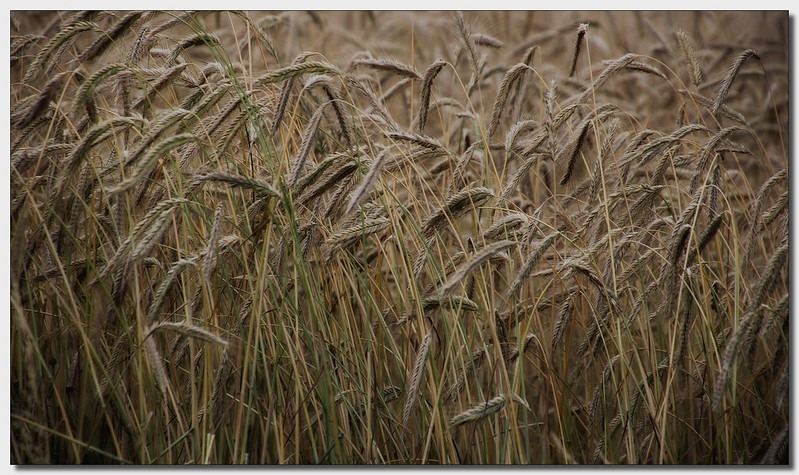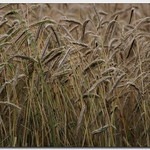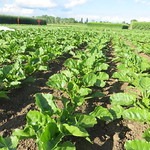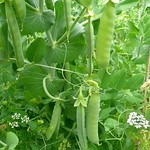
Review of weed control in harvest year 2023
7th December 2023BCPC Weeds Review 2023
The following article is a summary of the delegate discussion session facilitated by BCPC Advisory Board Member Jim Orson. The discussion was part of BCPC’s 60th Weeds Review held on 2 November 2023.
The weather during autumn 2022 to April 2023 determined the main weed control issues in broadacre crops. The Eastern Counties had mainly dry conditions post-harvest 2022 until around 20th October, when there was significant rainfall in all areas. February was exceptionally dry and March was exceptionally wet in all areas. Air temperatures during this period were typically average to above average except for an exceptionally cold December and a very cold latter half of January. There were some severe frosts during these cold spells.
Cereals

Pic: Rogge
The discussion on cereals was led by John Cussans of NIAB. It was unsurprising that there were situations where there were high populations of black-grass (Alopecurus myosuroides), the bromes (Anisantha and Bromus species) and Italian rye-grass (Lolium multiflorum) in autumn sown crops in early Summer 2023. This was because seed loss/germination post-harvest 2022 was low where there were dry seedbeds. Much of the sowing of winter cereals, even where the seedbeds had been dry since harvest, occurred before the general rainfall in late October. It was agreed by the delegates at the review that sowing date should be appropriate to the prevailing conditions and not just determined by calendar date. It was also agreed that some farmers were living too close to the edge with their grass weed seedbanks. In these situations, any weather conditions that slightly compromised chemical or cultural control could result in unacceptably high grass weed competition.
There was a general discussion regarding the increase in brome species, particularly in situations of reduced cultivation and where brome seed may be encroaching from field margins. NIAB is currently investigating germination and dormancy patterns of a number of collected brome populations because current data are limited.
Herbicides appeared to work as well as expected, including the new introduction Luximo (cimethylin), but the cold weather in December and late January and the very dry February resulted in some less competitive crops in the early spring. In some field trials this resulted in black-grass fertile tiller numbers of the plants surviving herbicides being around double that in a typical season.
Sugarbeet

KWS Group
The discussion on sugar beet was led by Pam Chambers of British Sugar. The wet conditions this March meant that most of the sugar beet crop was drilled later than usual. The few crops that were drilled early often took a long time to emerge and lacked vigour, but the late drilled ones got away quickly and moved rapidly through their growth stages. There were more instances of herbicide damage this season, linked to tank mixes being too robust and herbicide residuals from previous crops impacting on the early drilled crops. Pre-emergence herbicides generally worked well due to the moist conditions at application.
An increased use of min-till and reduced cultivations to establish beet is bringing new weed control challenges, especially where glyphosate is not applied in the early spring. There are instances where ALS resistance is suspected with poppies (Papaver spp.), chickweed (Stellaria media) and mayweeds (Matricaria/Tripleurospermum spp.). This will need monitoring where ALS tolerant beet is being grown.
SMART (ALS tolerant) beet acreage increased but many growers are finding they need a ‘holding spray’ of conventional chemistry in the programme.
Fat-hen (Chenopodium album) control is always a concern but poor ‘kill’ can generally be linked to spray intervals being too wide, and the choice and rates of products being used. Groundsel (Senecio vulgaris) was more of an issue this season, but where clopyralid was used control was adequate. There are always pockets of difficult weeds i.e. amaranthus (Amaranthus spp), annual mercury (Mercurialis annua) and mugwort (Artemisia vulgaris). There is the risk of cover crops and wild bird mixes introducing ‘new’ weeds to deal with i.e. barnyard grass (Echinochloa crus-galli), chicory etc. Some being a problem in their own right, others as host for pests and diseases. Weed species identification is important, especially with the more unusual species to ensure that populations are not building up if less well controlled by current chemistry.
Triflusulfuron-methyl (e.g. Debut) will have its last year of use in Europe in 2024. There is no publicly available information with respect to GB. There is increasing pressure to look at alternative methods of weed control due to the loss of actives, resistance and the need to reduce Plant Production Product (PPP) inputs which BBRO and British Sugar will be addressing in 2024.
Clomazone is now available as a pre-emergence application only and we wait to see if tri-allate will be approved in time for use in spring 2024.
Peas and field beans

Pic: Jane Dickson
The review of weed control in field beans and peas was provided by Becky Howard of PGRO. Pre-emergence herbicides worked well both in the autumn and spring except in early drilled winter beans which were applied while the soil was cloddy and dry. Crop damage sometimes occurred in these early drilled winter bean crops due to shallow drilling and heavy subsequent rain.
Weed problems occurred as a result of a wet July when there was rapid weed growth (mostly from freshly germinated seeds) due to a lack of crop competition in mature crops. The typical culprits were fat-hen, black nightshade (Solanum nigrum) and black-bindweed (Fallopia convolvulus).
The lack of a desiccant in seed crops was an issue in a difficult harvest.
Loss of EAMU’s (particularly pendimethalin and prosulfocarb for the control of annual grass weeds) is an issue for the 2024 harvest year. However, the recent authorisation of aclonifen in peas and field beans will help fill the gap.
The new, more restrictive stewardship guidelines for bentazone did not feature as a weed control issue in the 2023 crop.
An interesting discussion point from this session was that often we are not considering weeds across the whole rotation in enough detail and tend to think of them in isolation of a specific crop. There needs to be a wider perspective on potential weaknesses in the control of specific species across the whole rotation. There is a role for BCPC Weeds Group to investigate this issue further.

